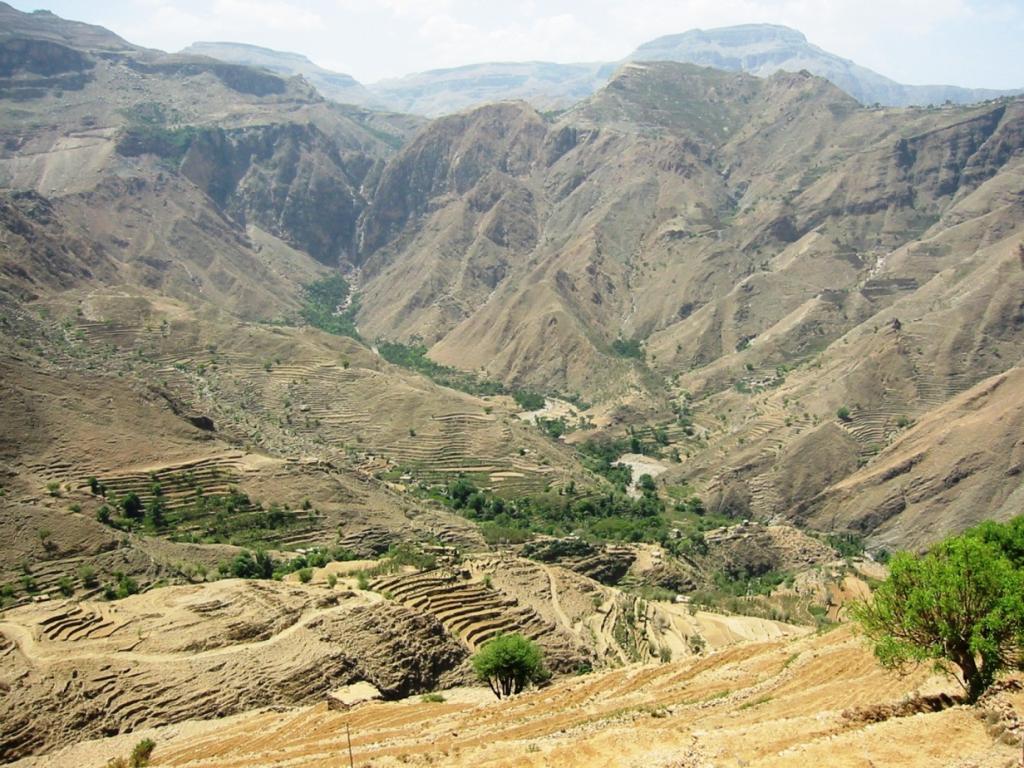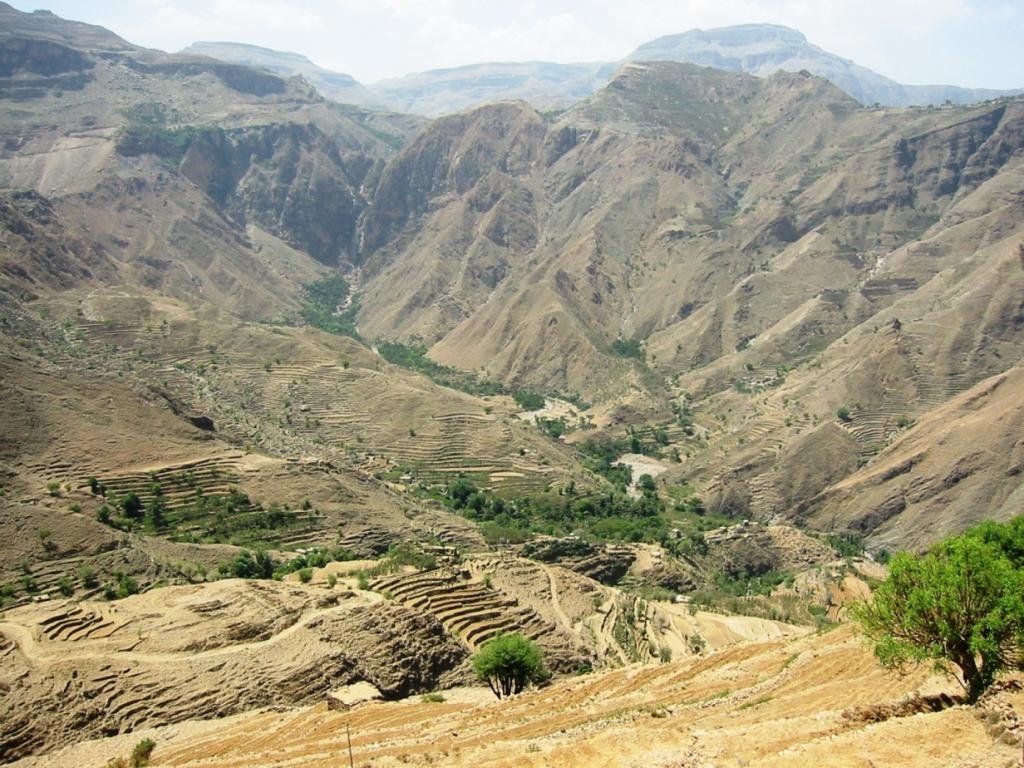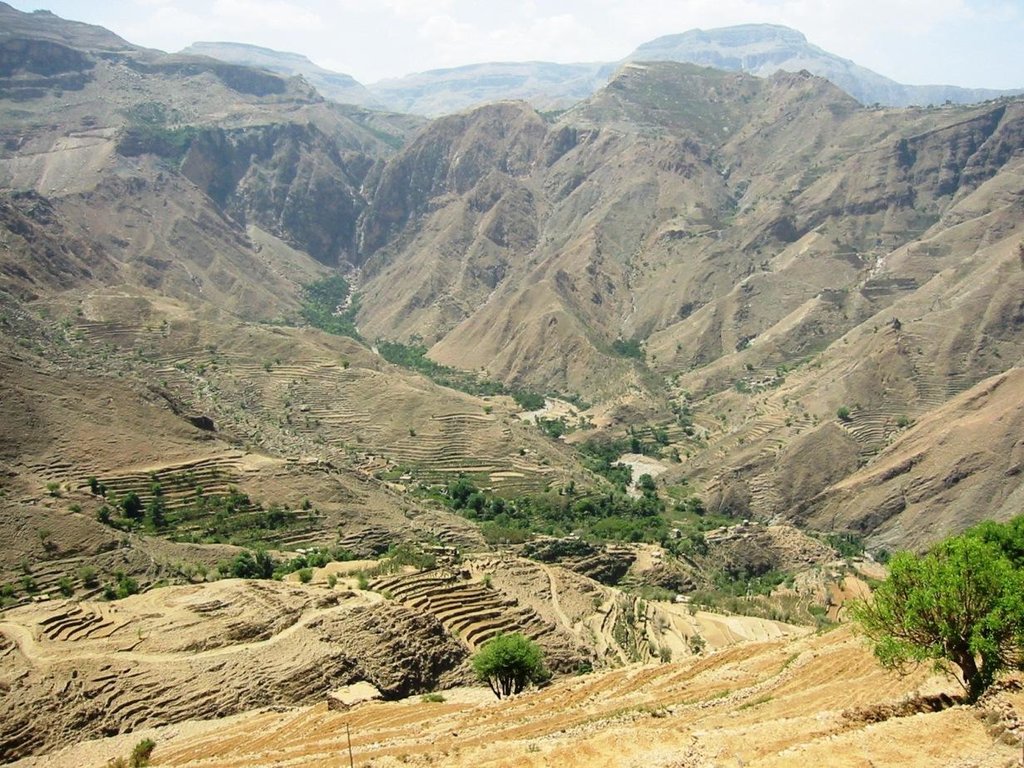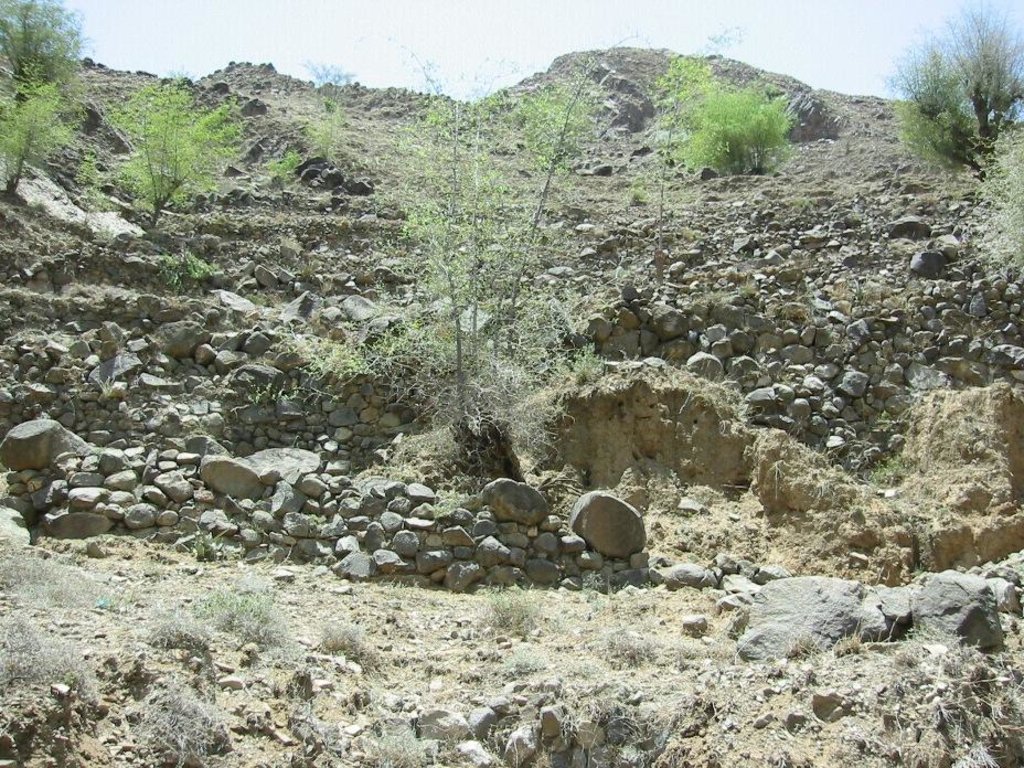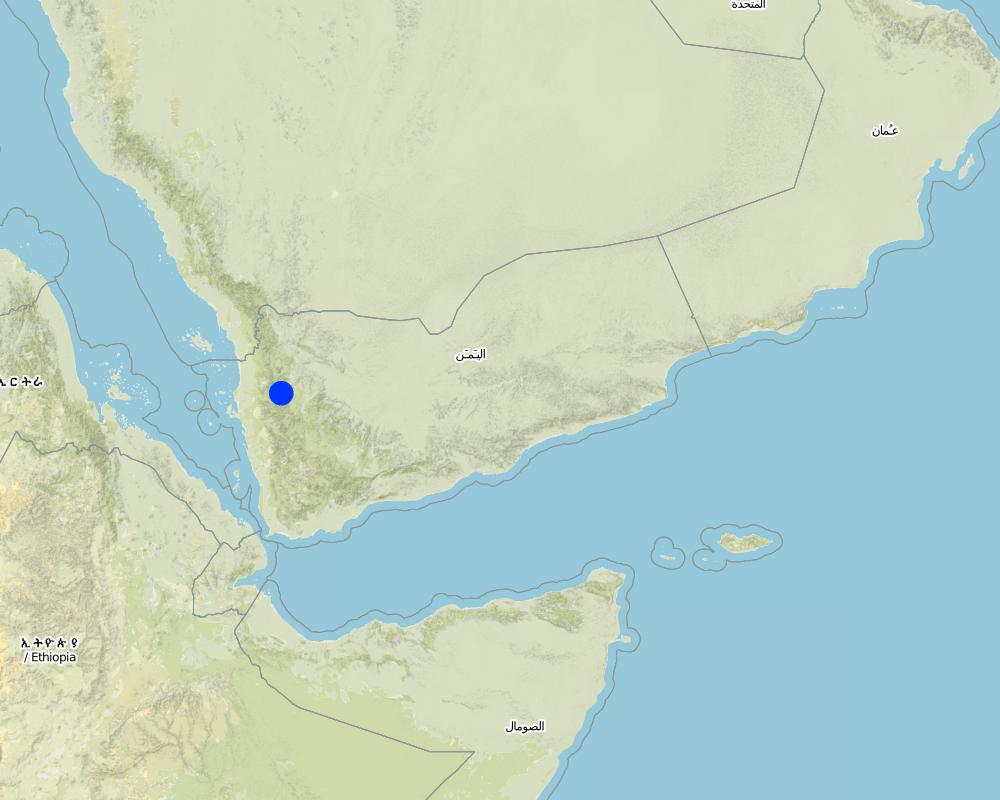leveled mountain terraces [Yémen]
- Création :
- Mise à jour :
- Compilateur : ahmed algalal
- Rédacteur : –
- Examinateur : Fabian Ottiger
المدرجات الجبلية المستوية
approaches_2621 - Yémen
Voir les sections
Développer tout Réduire tout1. Informations générales
1.2 Coordonnées des personnes-ressources et des institutions impliquées dans l'évaluation et la documentation de l'Approche
Spécialiste GDT:
Almashreki Mohammed
mashreki2000@yahoo.com
Agricultural Research and Extension Authority, AREA
Yémen
Nom du ou des institutions qui ont facilité la documentation/ l'évaluation de l'Approche (si pertinent)
Agricultural Research and Extension Authority (AREA) - Yémen1.3 Conditions relatives à l'utilisation par WOCAT des données documentées
Quand les données ont-elles été compilées (sur le terrain)?
09/02/2013
Le compilateur et la(les) personne(s) ressource(s) acceptent les conditions relatives à l'utilisation par WOCAT des données documentées:
Oui
1.4 Références au(x) questionnaire(s) sur les Technologies de GDT
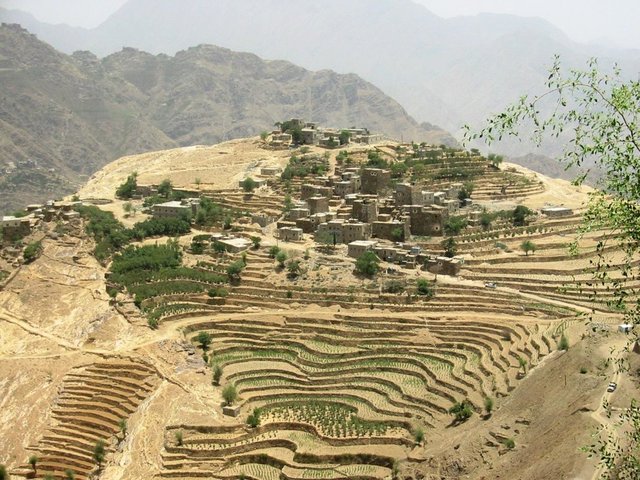
Flat Contour Terraces [Yémen]
Old flat terraces were built in accordance with the contour lines and surrounded by stones to create a suitable environment for the growth of crops, slope stabilization and reduce the risk of runoff and increasing water harvesting.
- Compilateur : ahmed algalal
2. Description de l'Approche de GDT
2.1 Courte description de l'Approche
organized collective action at a high pace for building agricultural terraces to improve livelihoods in resource-scarce regions in the ground
2.2 Description détaillée de l'Approche
Description détaillée de l'Approche:
Aims / objectives: A lot of agricultural land in mountain plains are mountain terraces were established in Yemen a long time ago and which constitute a method agriculturally traditionally unique since 2000 BC where it was built in steep slope places more than 60%, which works to change the shape of the slope (angle and length of the slope), which in turn leads to reduced Speed runoff, which helps to harvest water and protect the land from erosion.
The main objective of the establishment of the stands is to create a suitable environment for the growth of crops for the purpose of self-sufficiency due to a limited of arable land where invoked farmers veterans to create these terraces on the hillsides steep in order to increase the agricultural area and benefit from the runoff water to meet the crop water requirements and thereby increase productivity , in addition to the tower the terraces is working to change the shape of the slope and mitigate the damage resulting from the runoff, on the one hand.
Other works on the terraces to give a special character of beauty and greenery on the slopes and planted joy and hope in the hearts of the people and enhance their adherence to this tradition as long as shares in the stability and meet the needs of the population.
Terraces were built by the community in which concerted action all classes for the construction of terraced disease extraction of soil and collect stones and the end of the settlement of the soil and planting
2.3 Photos de l'approche
2.5 Pays/ région/ lieux où l'Approche a été appliquée
Pays:
Yémen
Région/ Etat/ Province:
Hajah Governorate
Autres spécifications du lieu :
Kahlan Afar
Map
×2.7 Type d'Approche
- traditionnel/ autochtone
2.8 Principaux objectifs de l'Approche
The Approach focused mainly on SLM with other activities (Increase the agricultural area, water harvesting, increasing the productivity of the crop)
Creating a suitable environment for the growth of crops, prevent soil loss, minimize the risk resulting from the rapid runoff, water harvesting and increase soil moisture
The SLM Approach addressed the following problems: the lack of arable land, the soil water erosion, poverty
2.9 Conditions favorisant ou entravant la mise en œuvre de la(des) Technologie(s) appliquée(s) sous l'Approche
disponibilité/ accès aux ressources et services financiers
- entrave
lack of money
Treatment through the SLM Approach: use of available resources in the region
cadre juridique (régime foncier, droits d'utilisation des terres et de l'eau)
- favorise
The existing land ownership, land use rights / water rights greatly helped the approach implementation: did not occurs raised to the implementation process because the bleachers at the foundation and found out of nowhere and work on community-created en masse, however, has been the work of legislation to regulate the process and maintenance of irrigation terraces
- entrave
Water Rights
Treatment through the SLM Approach: Documentation of an agreement between the land users on the method of water distribution and irrigation priority so that it is the first former regime from top to bottom
charge de travail, disponibilité de la main-d'œuvre
- entrave
Lack of labor
Treatment through the SLM Approach: work collectively at all stages of the implementation of the technology
3. Participation et rôles des parties prenantes impliquées dans l'Approche
3.1 Parties prenantes impliquées dans l'Approche et rôles
- exploitants locaux des terres / communautés locales
All local community. Approach includes all parts of society, because the person who created the stands is all members of society without exception
Men have more experience and ability to work. Women do works that are commensurate with their ability
3.2 Participation des exploitants locaux des terres/ communautés locales aux différentes phases de l'Approche
| Participation des exploitants locaux des terres/ communautés locales | Spécifiez qui était impliqué et décrivez les activités | |
|---|---|---|
| initiation/ motivation | aucun | |
| planification | aucun | |
| mise en œuvre | aucun | |
| suivi/ évaluation | aucun | |
| Research | aucun |
3.4 Prises de décision pour la sélection de la Technologie/ des Technologies
Indiquez qui a décidé de la sélection de la Technologie/ des Technologies à mettre en œuvre:
- les exploitants des terres seuls (auto-initiative)
Expliquez:
It is originally an ancient technique and exist but need to be rebuilt
Decisions on the method of implementing the SLM Technology were made by by land users* alone (self-initiative / bottom-up)
4. Soutien technique, renforcement des capacités et gestion des connaissances
4.1 Renforcement des capacités/ formation
Une formation a-t-elle été dispensée aux exploitants des terres/ autres parties prenantes?
Non
4.3 Renforcement des institutions (développement organisationnel)
Des institutions ont elles été mises en place ou renforcées par le biais de l'Approche?
- non
4.4 Suivi et évaluation
Le suivi et l'évaluation font ils partie de l'Approche? :
Oui
Commentaires:
bio-physical aspects were ad hoc monitored by land users through observations; indicators: wise and dignitaries with the correct mind.
technical aspects were ad hoc monitored by land users through measurements; indicators: wise and dignitaries with the correct mind.
socio-cultural aspects were regular monitored by land users through measurements
economic / production aspects were ad hoc monitored by land users through observations
no. of land users involved aspects were regular monitored by other through measurements
management of Approach aspects were regular monitored by other through measurements
There were no changes in the Approach as a result of monitoring and evaluation
There were no changes in the Technology as a result of monitoring and evaluation
4.5 Recherche
La recherche a-t-elle fait partie intégrante de l’Approche?
Non
5. Financement et soutien matériel externe
5.1 Budget annuel de la composante GDT de l'Approche
Si le budget annuel précis n'est pas connu, indiquez une fourchette:
- 2 000-10 000
Commentez (par ex. principales sources de financement/ principaux bailleurs de fonds):
Approach costs were met by the following donors: local community / land user(s) (Local community): 100.0%
5.4 Crédits
Des crédits ont-ils été alloués à travers l'Approche pour les activités de GDT?
Non
6. Analyses d'impact et conclusions
6.1 Impacts de l'Approche
Est-ce que l'Approche a aidé les exploitants des terres à mettre en œuvre et entretenir les Technologies de GDT?
- Non
- Oui, un peu
- Oui, modérément
- Oui, beaucoup
teamwork is one of the most important elements of sustainable land and protect it from deterioration and this the approach, which followed by the old farmers even continued the stands terraces to this day.
Did other land users / projects adopt the Approach?
- Non
- Oui, un peu
- Oui, modérément
- Oui, beaucoup
Did the Approach lead to improved livelihoods / human well-being?
- Non
- Oui, un peu
- Oui, modérément
- Oui, beaucoup
Did the Approach help to alleviate poverty?
- Non
- Oui, un peu
- Oui, modérément
- Oui, beaucoup
The increase in the agricultural area, water harvesting areof the most essential ingredients to alleviate poverty.
6.2 Principale motivation des exploitants des terres pour mettre en œuvre la GDT
- augmenter la production
Increase the amount of production
- conscience environnementale
- The creation of new agricultural land
- Stability and improve the people's livelihood
6.3 Durabilité des activités de l'Approche
Les exploitants des terres peuvent-ils poursuivre ce qui a été mis en œuvre par le biais de l'Approche (sans soutien extérieur)?
- oui
Si oui, décrivez de quelle manière:
Terraces built without support and continued to the present day
6.4 Points forts/ avantages de l'Approche
| Points forts/ avantages/ possibilités du point de vue du compilateur ou d'une autre personne ressource clé |
|---|
| Improve the livelihoods and the stability of society (How to sustain/ enhance this strength: Continuing to maintenance operations) |
| A tributary of real teamwork in advancing progress and achieve the desired goal, namely, agricultural terraces and teamwork lead to the strengthening of the social fabric and the bonds of love and assistance among themselves (How to sustain/ enhance this strength: Community awareness and land users in particular, the importance of the continuation of collective action to ensure the sustainability and continuity of the stands that need to unite everyone to preserve them for future generations.) |
| Take advantage of all the resources available in the region in the process of construction of terraces traditional methods and in accordance with the natural conditions and topography of the region |
7. Références et liens
7.1 Méthodes/ sources d'information
- visites de terrain, enquêtes sur le terrain
- interviews/entretiens avec les exploitants des terres
7.2 Références des publications disponibles
Titre, auteur, année, ISBN:
Report of the environmental resources available in the Afar region Kahlan (Mashreki, 2003)A study of land degradation in the Republic of Yemen (Yemen - ACSAD, 2002
Disponible à partir d'où? Coût?
Agricultural Research and Extension Authority, AREAAgricultural Research and Extension Authority, AREA
Titre, auteur, année, ISBN:
A study of land degradation in the Republic of Yemen (Yemen - ACSAD, 2002)
Disponible à partir d'où? Coût?
Agricultural Research and Extension Authority, AREA
Liens et modules
Développer tout Réduire toutLiens

Flat Contour Terraces [Yémen]
Old flat terraces were built in accordance with the contour lines and surrounded by stones to create a suitable environment for the growth of crops, slope stabilization and reduce the risk of runoff and increasing water harvesting.
- Compilateur : ahmed algalal
Modules
Aucun module trouvé


